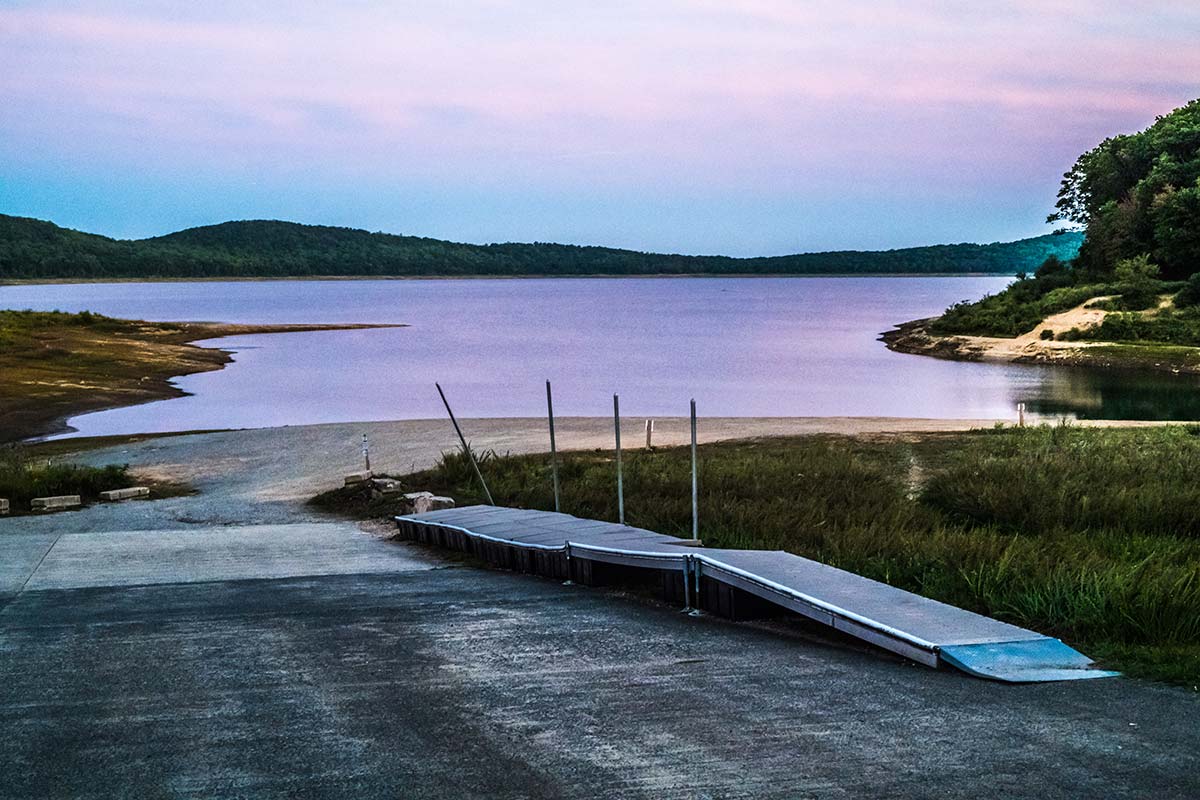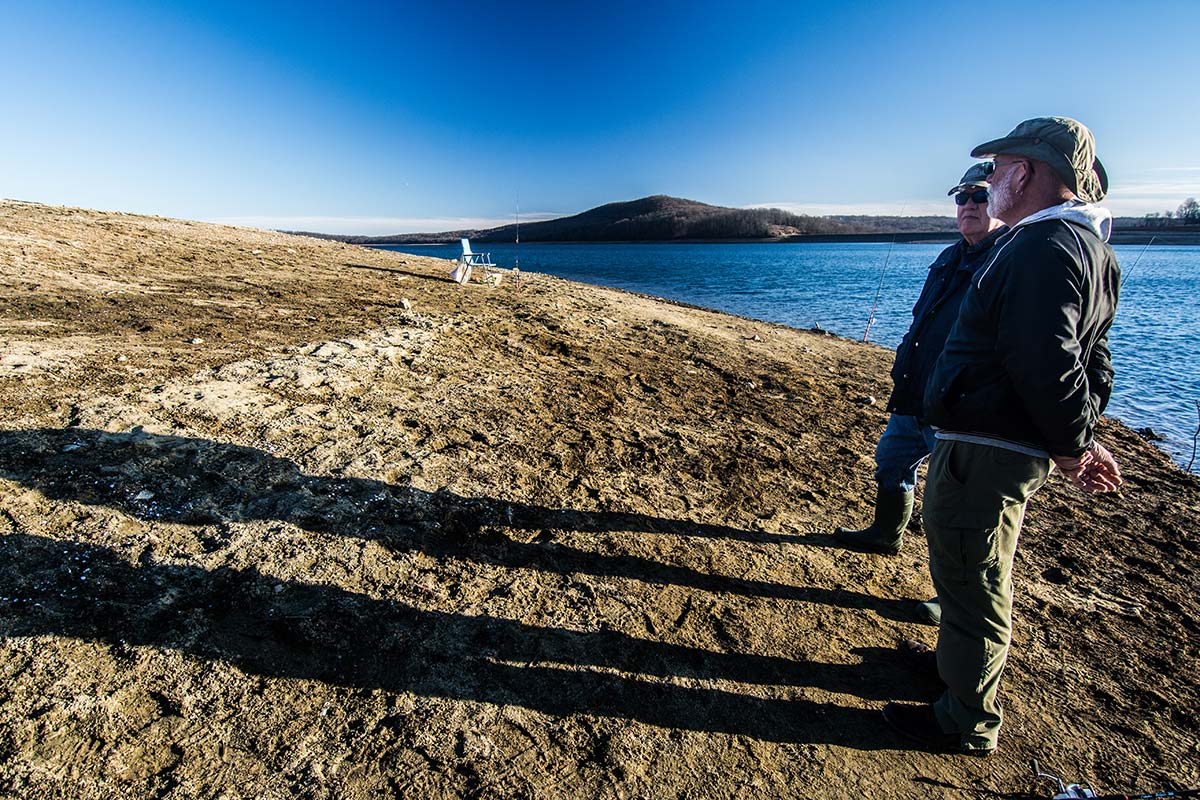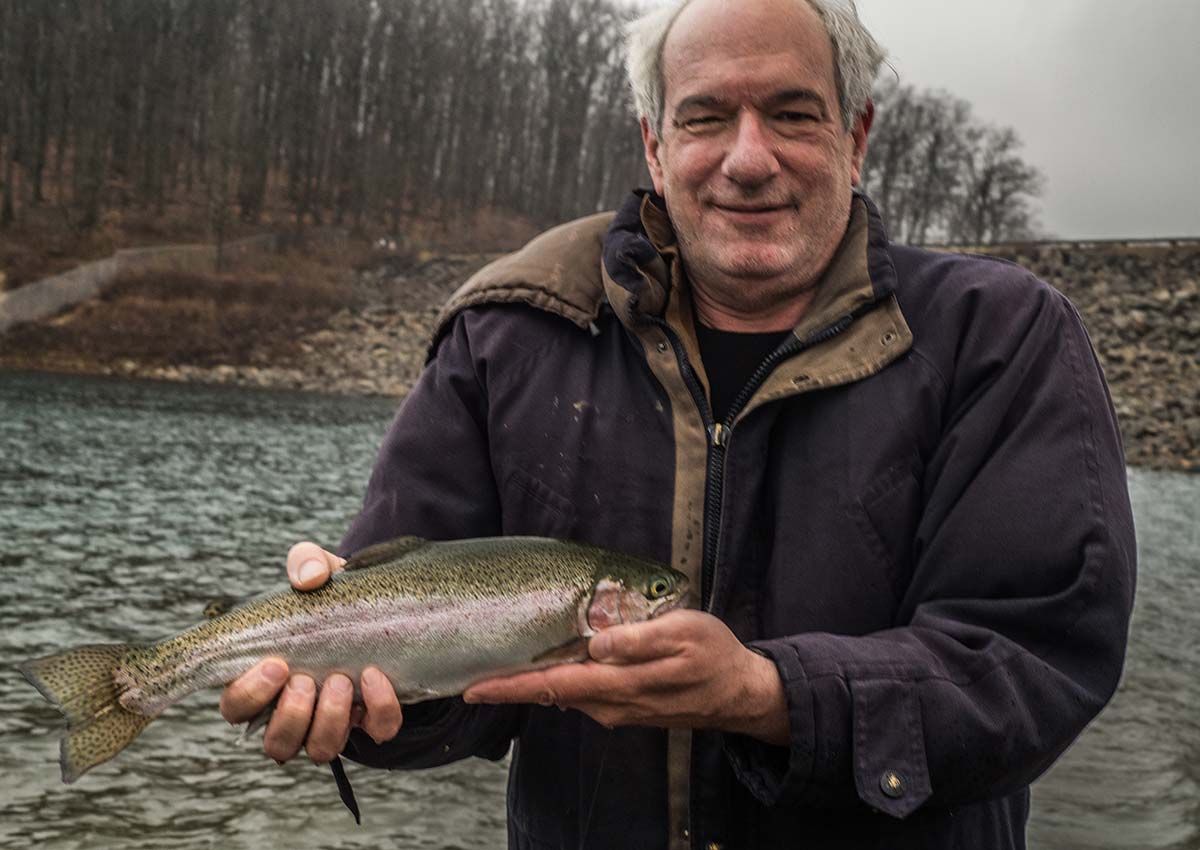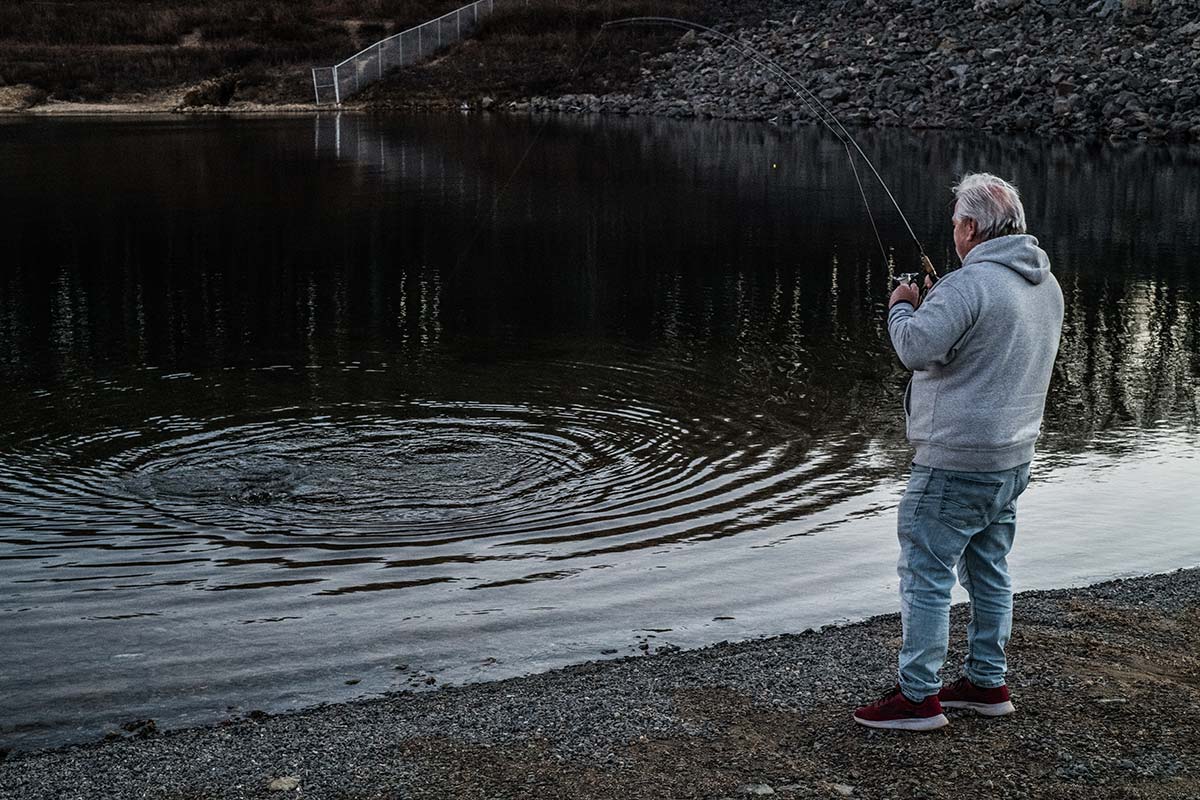
Put in time to make some catches at the Valley.
Because of work being done on the dams, Round Valley Reservoir is at its lowest level since filling in the 1960’s. Trout have less water to dodge anglers but don’t expect a miracle. Put in time to make some catches.
Shoreline trout fishing is usually slow no matter how low the water, and although I’ve heard of flurries of action such as I’m familiar with developing into showers, I’ve never experienced them, though I have caught rainbow trout as big as 6.9 pounds.
Round Valley Trout Association (RVTA) stocks trophy trout in “late March, early April at the same time as the 11-inch browns,” says member Mike Roman. “Also, monies are down with the water being down, which means membership is down. We do stock between 250,000 and 500,000 shiners 2 to 4 inches every fall,” he said.
Those little browns Roman mentioned grow very rapidly to 5 or 6 pounds and continue growing larger than the rainbows, but the abundance along shorelines of rainbows during fall, winter, and spring larger than the 15-inch legal harvest size is enough to keep you interested if none of the less common browns take your offering. Small rainbows are stocked in the spring by the state, which grow quickly. RVTA also stocks good-sized rainbows in addition to trophies of 4 or 5 pounds and larger.
Lake trout are a more likely catch than browns, and any of these three species may feed on those shiners RVTA stocks. Lakers haven’t been stocked for many years because they reproduce naturally. Averaging 3 or 4 pounds, some as small as 15 inches get caught.

The New Shoreline
Round Valley Reservoir’s shoreline has become a dynamic ribbon of changing form as water level declines. Dramatic points of dry land that used to be submerged 30 feet have developed, as well as numerous cuts and pockets. The more familiar with the new terrain you become, the better informed you become about what’s beneath the surface when the reservoir fills back up. For now, even returning veterans readjust their knowledge of spots productive last year when the level was some eight feet higher.
Park policy has changed, too. For decades, the rip-rap of basalt boulders to the left of the main launch has been a popular spot for trout fishing. This year, the New Jersey State Park Police have locked the gate to the walkway on top of the dike above those boulders. It’s payback for what happened during the pandemic. When asked about the situation, an officer said, “People took advantage and broke the rules.” COVID brought an exodus of visitors to Round Valley Recreation Area who overran numerous boundaries clearly demarcated by park police and now the price is being paid; but it’s a small one for trout anglers who will focus on more than enough range that remains available to them.
Entering the park through the main gate costs nothing until Memorial Day. More than enough area is easily accessible from Lot 2 and a little walking will access more yet. You can even hike into the back of the reservoir and fish there, if you want.

Rainbow Trout Tactics
The rig involves monofilament or fluorocarbon line (braid will only tangle.) Six-pound test will allow great casting range. Slip a 3/4-ounce egg sinker onto the mainline, tie the line to a barrel swivel just large enough not to pass through the sinker. For the leader, use a 3- or 4-foot section of fluorocarbon of the same test as the main line. Fluorocarbon is nearly invisible in the water, which is to your advantage. A size 6 plain shank hook works for Powerbait and marshmallows alike.
Place a marshmallow on the hook, then a mealworm. The marshmallow will float the bait off the bottom. Likewise, a finger-rolled ball of Powerbait not much larger than one of Mike’s Salmon Eggs is placed on the hook and floats. A Y-shaped rod holder manages easily, and you can use up to three rods per angler. Light power is all you need to play a big trout in the open water, but it is a good idea to use a reel with a fairly large spool if you can. None of the big ones I’ve caught from shore took off on runs that emptied much line, but if you get a little distracted, a trout can take the bait and spool a reel before you get the chance to set the hook. My ideal rod is a Noodle Rod I bought for steelhead fishing many years ago in Pulaski, NY, an 11-footer with light power that casts a mile.
None of us (that I know) who fish the winter shorelines know why, but we all agree lake trout hit best when the temperature is down around 22 degrees or colder. In January and February, the reservoir is plenty cold, regardless of temperatures, perhaps climbing to 35 or 40 in the afternoon, but it seems to make a difference. I’ve seen some lakers caught from shore when it’s mild out, but during a frigid two-week period of January 2015—just before the reservoir became an ice fishing mecca—lakers were the only species getting caught. They got caught in numbers, too, weighing up to 5 pounds. The previous year, I did hear of an 8-pounder from shore, and while seeing the fish would have been more convincing, the veracity of such stories is more likely to be real than not. Word of mouth moves quickly when a big one gets caught, the number of its weight making an impression that lasts.
Use the same rig I recommend for rainbows, but put size 6 hooks though the backs of shiners near the dorsal fins. Be careful not to penetrate spines with hooks. Also, put a small piece of Styrofoam on the leader to keep shiners buoyant. At least one company makes little pill-shaped Styrofoam floats that slip onto line just as egg sinkers do. I’ve found trout aren’t spooked by them.

The Elusive Browns
Round Valley Reservoir is the southernmost body of water where lake trout reproduce. While the rainbows and browns are holdovers at best (because they don’t reproduce), when you’re dealing with lakers, you’re dealing with wild fish, which is a pretty cool concept given a man-made reservoir. The season is open for them December 1, with six lakers of 15 to less than 24 inches and one greater than or equal to 24 inches as your bag.
Since the state no longer stocks browns, we depend on RVTA for them. In addition to stocking the reservoir, RVTA has monthly meetings, provides each member with a frequently published newsletter, and holds trout tournaments. I had caught three of their tagged Trophy Trout when I decided my money was better placed supporting the like, and so I joined the club. Not much is required to help. I valued the monthly meetings, and when my hours on the job no longer allowed me to attend, I fell off the roster. I had put in for what I had taken.
As I say, browns are an unlikely encounter. I’ve heard of very few caught from shore in recent years. If you want to tailor your approach to them, do it as we used to do it before Pequest Hatchery quit stocking them—use the same shiner rig used for lakers. Or you can cast plugs or spinners. I never forget being witness to an 18-inch brown caught on a spinner fished on 2-poiund test line during a blustery, cold February afternoon. That goes to show how aggressive the species can be. You don’t necessarily have to keep the lure near bottom.
I haven’t mentioned fly fishing, not because I’ve avoided the subject, but because the mainstream rig I’ve mentioned is a sure way to catch fish. If browns remained as common as they used to be, I’d put plugs and spinners before flies, too. Maybe only because I’m more of a spin fisherman. A very few shoreline anglers fish nothing but flies—usually streamers—and catch trout. Mostly, if not only, rainbows, but brownies and lakers are possible, too. Back in November of 2016 when the reservoir first receded to record low levels, I heard of a fly caster catching 20 rainbows in one afternoon.
The season for rainbows and browns remains open year-round, two trout combined of 15 inches or more allowed to be taken. While lakers are in no danger of decline, their size is small compared to lakers further north. RVTA stocks brown trout especially because they hope trophies over 10 pounds get caught—good reason to consider releasing any you catch. Members see the rapid growth rate, because the fish are tagged in a way that identifies the time of release. And yet they know that growth happens despite the reservoir’s notorious decline in fertility. The alewife herring that once flourished in the reservoir are gone. They fed browns until they grew gigantic, such as the 21-pound, 6-ounce state record caught at Round Valley in 1995.
When full pool returns, perhaps the water will at least be a little more fertile. There’s a lot of vegetation the water will cover. It will decompose, but let’s wait and see if it makes much difference.




